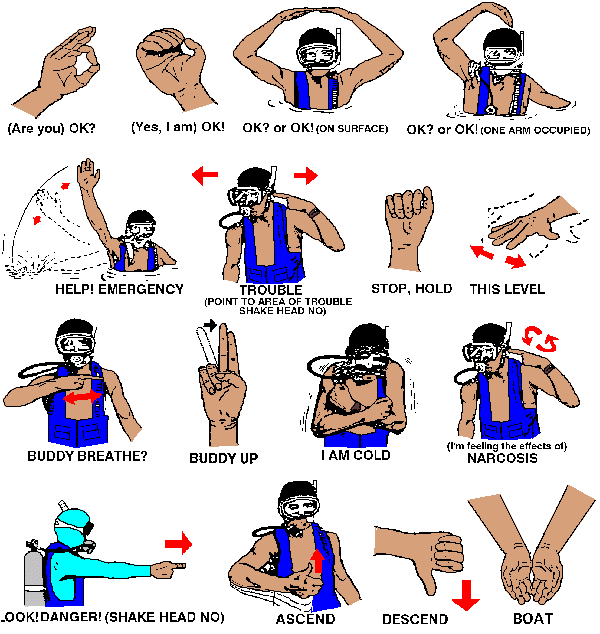Reading the right diving signals can save your life (courtesy of A Nice Gesture)
What’s the similarity between body language, hour of the day, voice level, “weather”, and tone of email? Give up?
Well, they provide perceptual cues on how somebody is feeling and are useful in determining whether you should “go for the kill”, wait for another opportune moment, or adopt a different strategy altogether.
Reading signals is an understated but critically important skill in the working world. That subtle glint in the eye, sweeping hand gesture, or somewhat terse sounding note conveys depths of meaning that cannot be easily discerned by mere words alone.
If you get it right and move along to the right tempo and flow of the moment, your likelihood of success will be high. If however you fail to anticipate these little gestures and plough on ahead while disregarding them, hitting a wall is almost imminent.
In a similar fashion, you should also be mindful about conveying the right message to another party.
Avoid misleading others with wrong impressions due to an exaggerated motion, or carelessly crafted Whatsapp or text message. Do also be sensitive enough to discern the difference between Yes-es, Nos and Maybes.
The art (and science) of reading and conveying slight hints and signals can be learnt, often from bitter experience. While psychologists are masters at this game, I believe that we can all improve our SQ or “Signalling Quotient” by doing the following:
1) Speak to other more experienced (and friendly) colleagues, especially “survivors” who have been around and are successful in what they do. They may know things that you don’t. Examples include the best way to communicate with another party (face-to-face, email, phone, SMS, IM?), the best time to do so, and the levels of preparation required.
2) Pick up a good book or read all about body language. There are some good references here, here and here. If you’re a guy hoping to date a girl, this quirky guide by Zoey Miller is not to be missed!
3) Study the other person’s culture and make sure that you don’t misinterpret the signs. Understand the difference between high context and low context cultures (read more about cultural intelligence here.)
4) Watch and learn from others, paying attention to both the nonverbal and verbal cues in which they adopt. See how the “corporate dance” is played, and focus in particular on the winners in this performance.
5) Learn from your own experience and refrain from making the same mistakes twice. Keep an internal journal in your mind (or write if you can’t remember) so that you don’t read or emit the wrong signals.
6) Finally, don’t hesitate to ask the right questions and confirm your hunches – when the timing and environment is right. Confronting a boss after a tension-filled meeting and asking him or her about your raise is a huge no-no. Similarly, one shouldn’t waste time with hours of superfluous conversations with a sales person if one doesn’t have any interest in his or her products (unless of course, the interest is in the person himself/herself)


